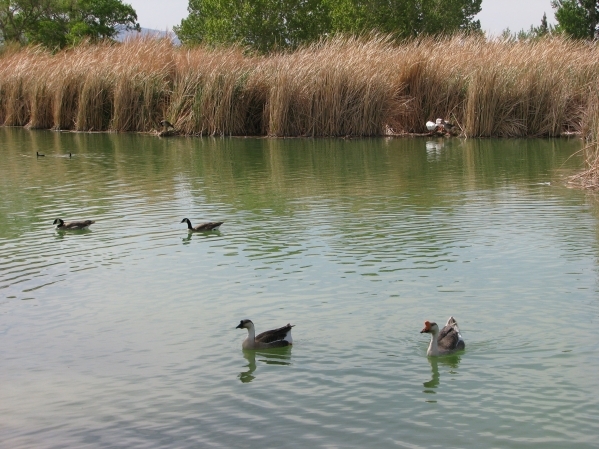Government-managed sites offer best dove hunting

With mourning dove season beginning Tuesday and the waterfowl hunting seasons not far behind, some readers are asking, “Where can I go?”
Perhaps the easiest places to find, where public access is not a problem and you stand a good chance of finding quality wing shooting, are those managed by a government agency. We just don’t have the agriculture and wetlands habitat elsewhere that will attract large numbers of birds.
Within a three-hour drive of Las Vegas are five such government-managed locations, three state managed wildlife management areas and two federal wildlife refuges with habitats that attract a variety of bird species.
The northern-most of these locations is the Kirch Wildlife Management Area located along Highway 318 in northeastern Nye County about 200 miles north of Las Vegas and 70 miles south of Ely. Kirch is comprised of more than 14,800 acres and includes five reservoirs along with a variety of upland habitats.
While the management area is primarily known for its waterfowl hunting, it does offer sportsmen the chance to bag some early-season mourning doves. Hunters can see doves in the upland areas across the management area, but most are found in the food plots along the northern access road near the facility’s headquarters.
Sportsmen who make the trip to Kirch should be sure to pack their fishing gear alongside their shotguns. The reservoirs are home to largemouth bass, crappie and rainbow trout, and some of the best fishing can be found during the fall. Also be sure to bring plenty of insect repellant, especially near the water. Along with migrating waterfowl, Kirch has a rather robust mosquito population. Primitive camping is available.
The next location south is the Key Pittman Wildlife Management Area in Hiko, just north of the junction of Highways 93 and 375 about 110 miles north of Las Vegas. Though small in comparison to Kirch, Key Pittman offers good hunting opportunity for doves and waterfowl. While dove hunters tend to focus their efforts on opening day and the first weekend of the season, sometimes the best hunting is a week or two into the season.
Key Pittman is comprised of more than 1,300 acres and includes two reservoirs, Nesbitt and Frenchy. Field areas are limited, so consider midweek hunts to avoid early-season crowds during dove season. As a safety precaution, the area is limited to 55 hunters.
About 15 minutes south of Key Pittman, at the southern end of the valley, is the Pahranagat National Wildlife Refuge. This facility is managed by the U.S. Fish and Wildlife Service and offers waterfowl and upland game hunting. Dove hunting is permitted daily during Nevada’s legal season, but waterfowl hunting is permitted only on Tuesdays, Thursdays and Saturdays. Camping also is available.
Closest to Las Vegas is the Overton WMA located at the southern end of Moapa Valley about 70 miles northeast of Las Vegas. Because of its proximity to Las Vegas, the WMA manages hunter access through a reservation system for opening day and weekend of the dove season and for the entire waterfowl season. That said, once the early-season rush is over, finding open space is generally not an issue.
During the dove season, hunters can move about the area in search of a good stand, but during the waterfowl season, hunters are assigned to a specific blind type and location. Hunters may select from pond, flooded bulrush checks or field blinds.
Last on the list is the Ash Meadows National Wildlife Refuge northwest of Las Vegas. This facility is located off Highway 95 south of Beatty and permits upland game and waterfowl hunting in designated areas.
Waterfowl hunting is permitted only at Crystal Reservoir, Peterson Reservoir, Horseshoe Reservoir and Lower Crystal Reservoir. The refuge is closed to hunting Dec. 10 to 16 to accommodate the Christmas Bird Count. Per federal law, “Firearms must be unloaded and dismantled or cased during travel through the refuge.”
Keep in mind that whether you are hunting doves or waterfowl, only nontoxic shot may be used when hunting on a state wildlife management area or federal refuge. A list of approved shot types can be found at www.fws.gov.
Freelance writer Doug Nielsen is a conservation educator for the Nevada Department of Wildlife. His “In the Outdoors” column, published Thursday in the Las Vegas Review-Journal, is not affiliated with or endorsed by the NDOW. Any opinions he states in his column are his own. He can be reached at intheoutdoorslv@gmail.com.












